Stem celery, planting, care, harvesting, benefits, recipes
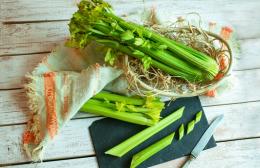
The benefits of celery have long been unconditionally proven. Stem celery is used as a component of some dishes or their main component, and it is not at all difficult to grow it even on a windowsill.
Content:
- Stem celery, what it looks like, description and photo
- Planting and care
- Pests and diseases, methods of combating them
- Petiole celery: harvesting and storage rules
- What are the benefits of petiole celery, beneficial properties
- Bleaching petioles
- How to eat petiole celery
- How to grow petiole celery at home
Stem celery, what it looks like, description and photo
As the name suggests, the main part of this species is the stem. Externally, it differs from other species in its long, juicy petioles and the absence of a pronounced tuber.
The petioles formed in the first year of cultivation are eaten. If harvesting is late, hard fibers form in the stems, making them unsuitable for consumption.
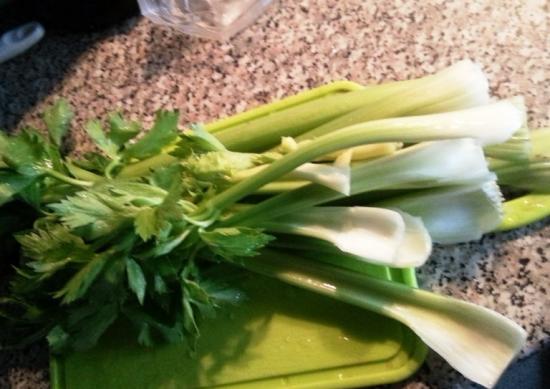
Left for the second year, the plants produce flower stalks. In this case, cross-pollination of varieties occurs with the loss of varietal characteristics by the descendants. To prevent this, it is recommended to separate the beds by a sufficiently large distance in the second year.
The stems are used not only in cooking, but also in cosmetology and even medicine. The latter is due to the rich chemical composition and variety of useful elements.
Planting and care
It is recommended to plant seedlings in open ground. This is due to the fact that many seeds require high temperatures to germinate. In this case, it is important that the seedlings, by the time of planting, have formed four to five leaves and the total height of the stems is at least 15 cm.
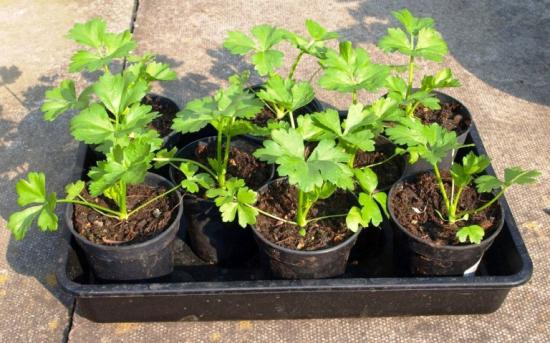
The best thing celery growing on a loose fertile substrate with moderate moisture and a slightly acidic reaction.
In order for the seedlings to take root and produce a good harvest, it is important to thoroughly prepare the site before planting:
- The selected area should be well lit, but protected from drafts;
- Place suitable neighbors near the plots - lettuce, tomatoes, beans, white cabbage;
- In the fall, dig up the area, fertilizing the soil with humus;
- Prepare furrows 30 cm deep with a distance of 40 cm between them.
Planted plants also need care, on which the quality of the harvest depends.
The main points to pay attention to include:
- Before direct planting, mineral fertilizers must be scattered in the trenches;
- A month after planting, treat the soil with urea in a ratio of 1 tablespoon of urea per 1 square meter. m;
- It is important to prevent the soil from drying out by systematically watering the seedlings;
- After watering, it is important not to forget about loosening;
- When the height of the petioles reaches 30 cm, they need to be carefully tied into bunches and wrapped in thick dark paper. This is necessary for whitening.
If you follow simple rules, you can get an environmentally friendly and healthy product. All it takes is a little time and effort.
Let's watch a useful video about growing stem celery:
Pests and diseases, methods of combating them
Like other crops, celery also suffers from pest attacks.

The most dangerous and common include:
- The bean aphid is the largest of all insects of this species, dangerous because each new generation grows in just two weeks;
- Borscht fly - hatches at the end of May, often flies from the hogweed, lays eggs under the skin of the foliage. The affected plant can be noticed by the formation of small lumpy spots. The hatched larvae gradually eat away the leaves, forming long brown lines. As a result, the yield decreases, and those petioles that survive become bitter;
- Carrot psyllid - common in the northwestern part of the country. Spends the winter on conifers, after which it flies to other crops. After the psyllid sucks the juice from the leaves, they begin to deform and growth is inhibited;
- Carrot fly - after wintering in the soil, flies out in the spring and lays white eggs under the plant, when the first true leaf is formed. The hatched larvae penetrate the root and damage it, moving towards the stem. Seedlings can be protected by timely weeding, loosening the soil and applying fertilizers.
In addition to insects, diseases can also cause a lot of harm.
The most dangerous are:
- Powdery mildew - can attack seedlings both in open and closed ground. The leaves are most affected, covering them with a white coating, which gradually takes on a powdery form with black dots. In case of large-scale damage, dew affects both parts of the leaf blade, spreads to the stem and provokes rotting of the plant;
- Septoria - affects all aerial parts, begins with the formation of chlorotic round spots. Over time, the spots begin to lighten in the center and form a dark border along the edges.As a result, the affected leaves curl and dry out, the petioles become thin and brittle;
- Fomoz is a fungal infection that affects both underground and above-ground parts of the plant. The first sign of Phoma is damage to the top point of the seedling. As a result, the plant slows down, the leaves begin to turn yellow, acquire a brown or blue tint, and the stems become brittle;
- Cercospora blight - often affects greenhouse plants, affects all above-ground parts of the plant, originating in seedlings. It begins with the formation of round spots on the leaves, which over time acquire a purple tint.
If you do not pay attention to the damage in time, there is a danger of completely losing the crop. To prevent this, it is necessary to monitor the condition of the seedlings in order to notice the problem at the initial stage, when it is not so difficult to deal with it.
Petiole celery: harvesting and storage rules
In order for the harvest to be as juicy, aromatic and sweet as possible, it is important to adhere not only to the rules of planting and care, but also to assembly. Since petiole celery is quite sensitive to temperature changes, it is recommended to harvest it in September, before the first frost.
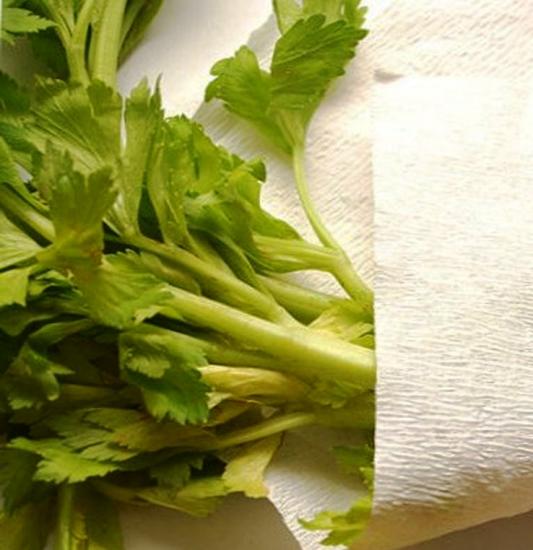
Keeping the plant in the beds for more than 11-16 weeks from the moment of planting is not recommended at all. During this time, it will lose its taste, and the fibers of the stem will become tough and tasteless. It is necessary to harvest celery by cutting it at the root. You can store it in the cellar for up to several months, in the refrigerator for two to three weeks, with the leaves cut off, or in the freezer, where it can remain for a year.
What are the benefits of petiole celery, beneficial properties
A large number of useful elements that make up the plant have a beneficial effect on the human body.
- Restoring water-salt balance, promoting the outflow of excess fluid from the body;
- General cleansing of the body due to anti-aging and antioxidant properties;
- Increasing the defense capacity of the immune system;
- Maintaining general tone of the body, improving mood, reducing nervousness and tension;
- Preventing the deposition of fat cells;
- Preventing the deposition of kidney stones;
- Inhibition of the development of malignant neoplasms;
- Improving the functioning of the digestive system, cleansing toxins and stabilizing the functioning of the intestines.
The plant is considered an aphrodisiac and is low in calories. Thus, celery is a real storehouse of nutrients for those who want to lose weight.
Bleaching petioles
Artificial bleaching of the stems not only gives them a lighter shade, but also improves the taste, making it more delicate. The easiest way to carry out this procedure is hilling with wet soil. To do this, as the plant grows, it is necessary to pour the soil higher, leaving only the growth point and leaves above it.

The only drawback to hilling is the earthy taste. To avoid it, you can use another whitening method. Twenty days before harvesting, the stems must be wrapped in soft cloth and covered with thick paper on top, leaving only the leaves outside.
It is important that when bleaching, the entire petiole is covered with earth or paper. There should be no gaps between the soil and the binding material.
Let's watch a useful video about bleaching petiole celery:
How to eat petiole celery
This product is quite widespread in cooking. The most common dishes with this vegetable include pickled. To prepare, wash 12 stems and a bunch of parsley thoroughly, remove fibers and cut into small pieces. Take 10 cloves of garlic, peel and cut into slices.
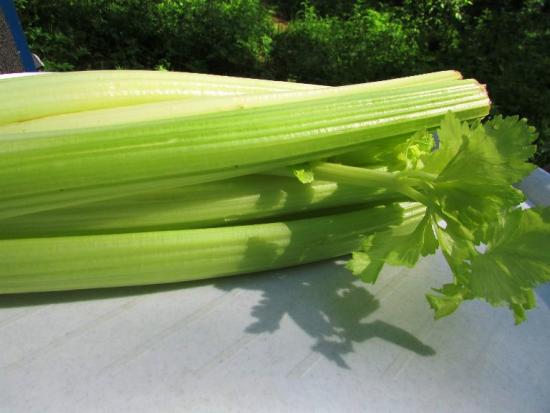
Place 20 allspice peas, chopped parsley and garlic into a pre-prepared enamel container. Place celery in the same container and sprinkle with ground red pepper. Pour 3 liters of water into another pan, boil, add 4 tablespoons of granulated sugar, the same amount of salt and freshly squeezed juice of two lemons. Pour the resulting mixture over the stems and place under a press, then put them in the refrigerator for three days, after which they can be eaten.
Cream soup, to prepare 6 stems you need to wash, peel, finely chop and fry in butter until softened. While the vegetable is frying, boil 3 medium-sized potatoes in salted water, first cutting each into four parts. After the vegetables are ready, grind until smooth using a blender. Add 300 ml of cream, salt and pepper to taste to the resulting mixture, bring it to a boil.

Salad, for preparation you will need 300 g of stems, 500 g of cherry tomatoes, a small green hot pepper, half a red bell pepper, two tablespoons of olive oil, three cloves of garlic and the juice of half a lemon. Vegetables need to be washed and chopped, then seasoned with a mixture of olive oil and lemon juice. It is recommended to add salt before serving.
The vegetable goes equally well with vegetables and looks good in dishes where it is the main component.However, it is important to remember the specific taste, which should not overwhelm other vegetables when cooked.
How to grow petiole celery at home
Like other root vegetables, celery grows well both in garden beds and on the windowsill. To grow from cuttings, you need to purchase it in a store, cut off the greens and leave the stalk.

The latter needs to be germinated a little, and then planted, according to the rules:
- Purchase soil in advance or prepare it by mixing turf soil, humus and peat in equal quantities;
- Choose a container - plastic or clay, wide and shallow;
- After planting, it is important to provide the vegetable with good lighting; ideally, it is recommended to extend daylight hours using fluorescent lamps;
- Ensure a stable temperature from +18C to +20C, providing moderate moisture.
For irrigation, it is recommended to use settled water at room temperature. It is also important to avoid dangerous temperature fluctuations.
Celery is a tasty and healthy plant that has long settled not only on the shelves of grocery stores, but also in gardeners’ beds. Properly grown and prepared vegetables will help enrich not only the table, but also the body with useful substances.

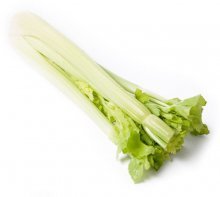
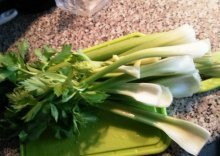

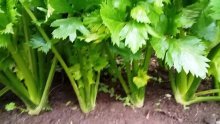
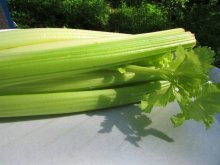

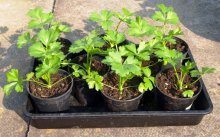
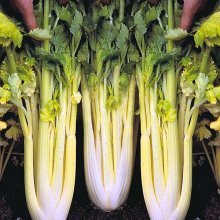
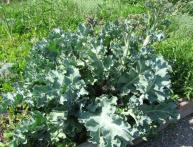

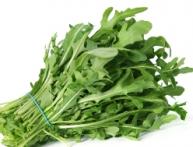
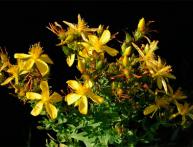
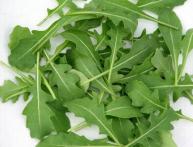


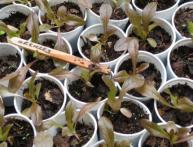
Comments
I buy stem celery at the store. In summer and autumn, I buy all my greens from grandmother gardeners who sell their harvest on the street, but I have never seen them sell stem celery, only leaves.
Unfortunately, celery does not grow on our windowsill; most likely, it does not have enough light, therefore, it needs additional lighting. In open ground, celery grows well if it is planted in the sun rather than in the shade. In addition, do not forget about regular watering.
I love stem celery, I most often use it for salads, and I often add it to meat dishes. But so far it’s not working out very well with cultivation, although I don’t think it requires any special effort, there’s just not enough time to do it seriously.